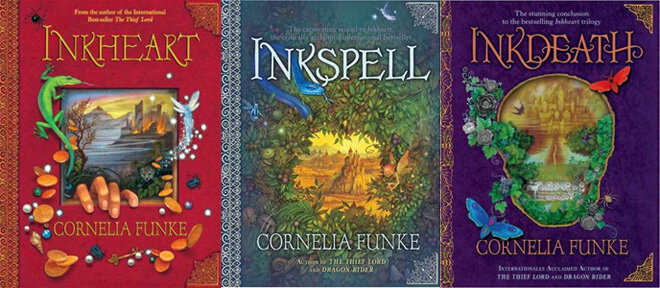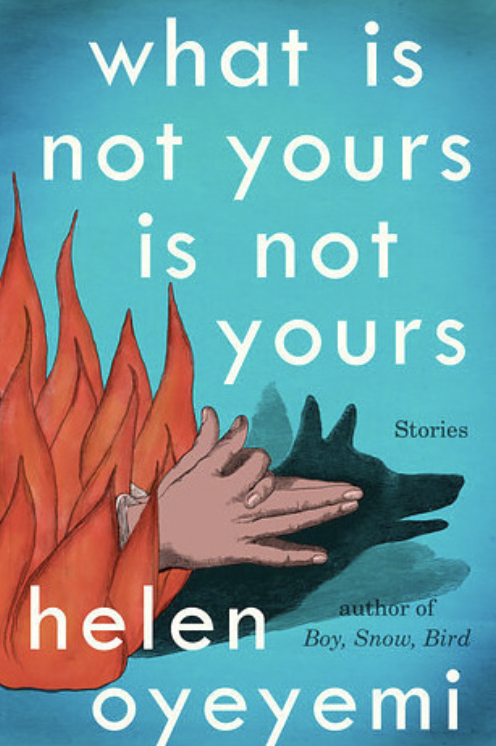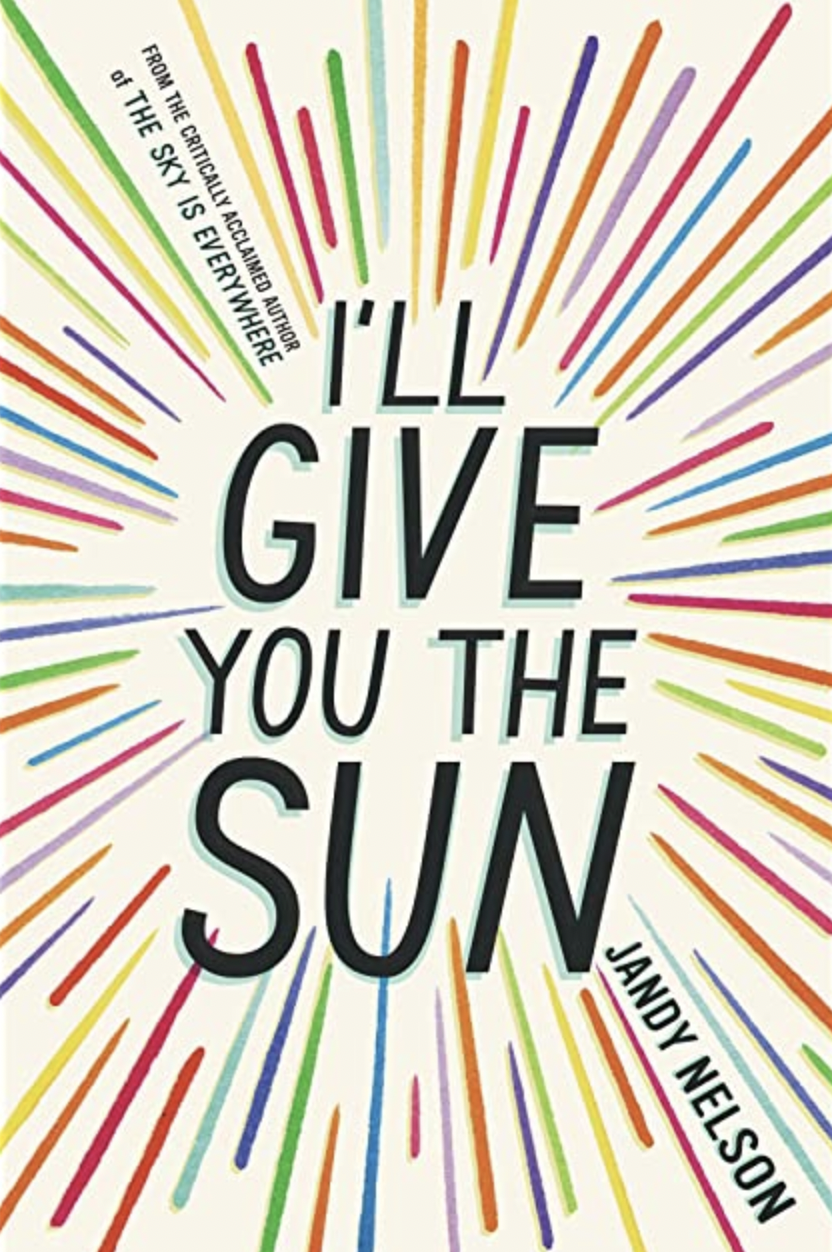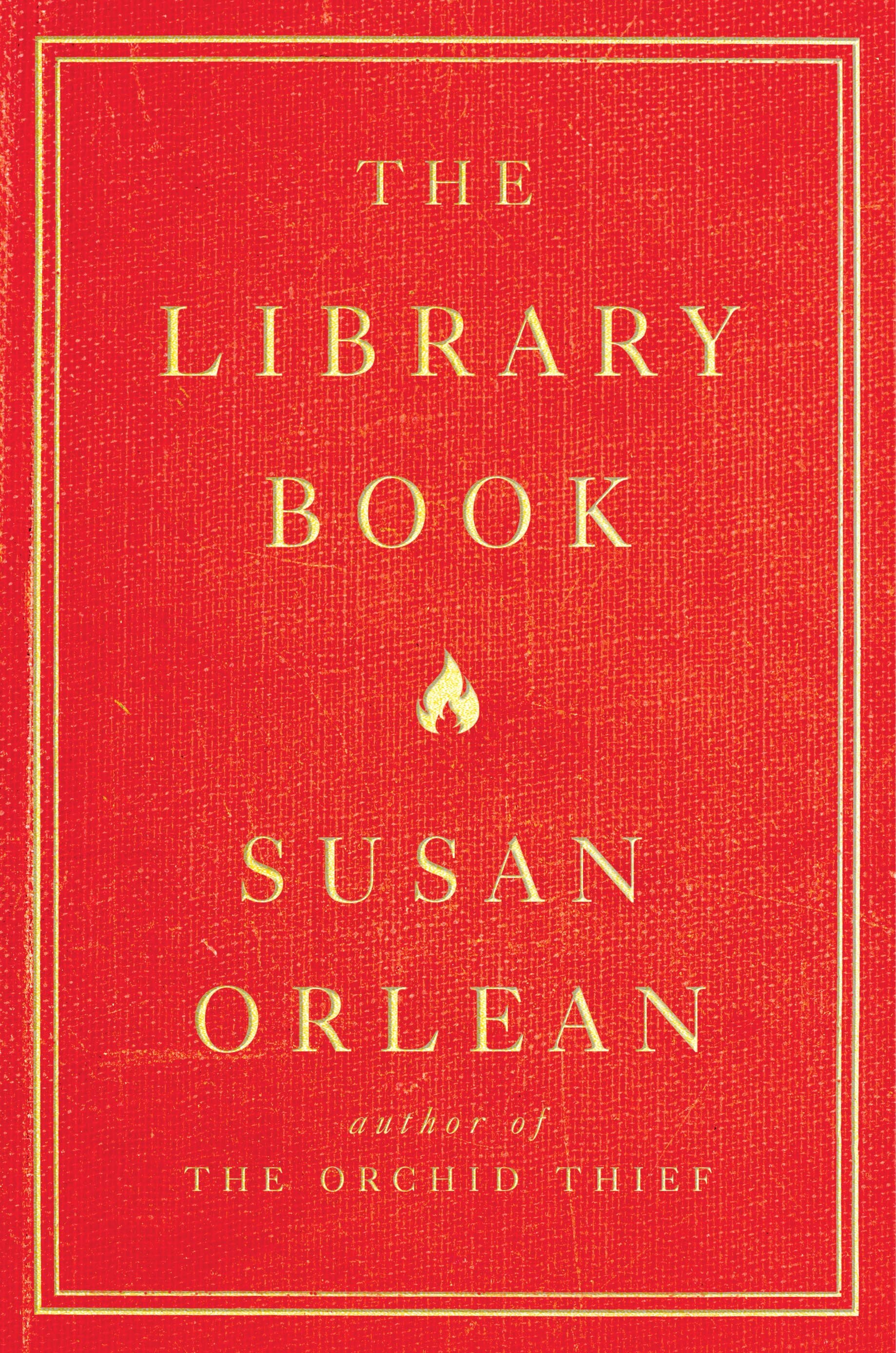The Community Library Reading Awards 2019
This year’s winners of The Community Library Reading Awards are announced! From most surprising book, to favourite translated fiction, to a new favourite author, I highlight some of my favourite books of the year.
Biggest Surprise
The Perks of Being a Wallflower by Stephen Chbosky
The gist: This epistolary novel follows Charlie, a shy and introspective kid in his first year of high school. Through the letters he writes to an unknown “friend”, we witness Charlie navigating first love, sibling rivalries and high school dances.
I didn’t expect to enjoy this book, because I’m very wary of this trope that we see a lot in YA fiction: the coming-of-age of an awkward boy who meets a quirky but damaged older girl who does nothing but further his journey of self-discovery. And of course once he has gone through his journey, the female character is no longer necessary and thus disappears into oblivion. Another term for this type of female character is "manic pixie dream girl". So I had that expectation going in, but I was wonderfully and pleasantly surprised to find that this book offered deep insight into love, friendship and violence. It wasn’t a caricature of high school, nothing was romanticised or dramatized – it felt very real. In terms of the female characters being manic pixie dream girls, I actually found that they were interesting and dynamic, and didn’t disappear into oblivion once Charlie had listened to their damaged pasts. Something I also really liked was that Charlie was held accountable for his actions – he wasn’t excused just because he was the protagonist of our story. Overall, I was really pleasantly surprised at how much I loved this book, and it’s definitely one that I’d like to read again.
Biggest Accomplishment
The Goldfinch by Donna Tartt
Biggest Accomplishment
The Goldfinch by Donna Tartt
The gist: When thirteen-year-old Theo survives a tragic accident that kills his mother, his whole life changes. Throughout his tumultuous childhood and dangerous adulthood, Theo holds on to the one thing that connects him to his mother; a captivating and valuable painting that haunts him wherever he goes.
Honestly, it was just a relief to finish it. This book is 867 pages, and took me 32 days to read, which was the longest time I spent reading a book this year. I didn’t like the book that much, and I think part of it was the length. I was frustrated at how much of my time I had dedicated to this story that, in the end, I didn’t think was worth it. It’s a series of bad decisions and contrived situations that are very hard to believe. There is so much detail crammed in, but I couldn’t tell you half of what happened. Interesting nuggets of thought are drowned in paragraphs of lyrical prose that romanticise even the most mundane of things that are irrelevant to the story. But I finished it, and I’m very proud of myself for doing so.
Most Thought-provoking Read
The Quiet at the End of the World by Lauren James
The gist: In a not too distant future, Lowrie and Shen are the two youngest people on the planet after a virus caused global infertility. But was happens when Lowrie and Shen are forced to question their understanding of the world they live in?
I rated this book 3 stars, which means I thought it was just okay. I thought the novel tackled a few too many high-concept ideas for a 330 page book, but it is one that I’ve continued to think about. The first half of the book talks about the legacy of the human race, and what will be left of us when we're gone. It poses the questions: What is important in moving forward? And: What will future generations care about? Though the novel doesn't explore this theme to the extent that I'd like, it planted the seed, and maybe I’ll find a book to read in 2020 that goes more in-depth into this topic.
New Favourite Fictional Character
Dustfinger from the Inkworld trilogy by Cornelia Funke
The gist: 12-year-old Meggie discovers that her bookbinder father, Mortimer, has the ability to bring characters out of their books by reading aloud. When a stranger shows up at their door one night, Meggie and Mo are roped into an adventure that will take them into the world of words and imagination.
I read the Inkworld trilogy when I was around 10 or 11 years old, and I remember really enjoying it. This year I reread the first two books, and I was amazed to find just how well they hold up. The first one I only rated 3 stars, but the second I liked much more and rated it a 4. When I first read the series, my favourite character was Meggie, of course, because I was her age and also had blonde hair and blue eyes and loved reading. But rereading the series now, I discovered a new favourite character: Dustfinger. Dustfinger is a fire-eater who has been read out of his magical story into the real world. He’s handsome and mysterious and brooding, but I love him because he’s such a morally grey character. He’s so human; he makes mistakes, he betrays friends, he breaks promises. But he’s so lovable because Funke makes the audience believe that, deep down, he really is good.
Favourite Cover
Favourite Cover
What is Not Yours is Not Yours by Helen Oyeyemi
The gist: This is a short story collection, each one focussing on the concept of a key. The stories span time periods and landscapes and blur the line between magic and reality.
Something about this book intrigued me. Each of the stories has a mysterious and magical quality, as if there's a secret that you want to be let in on. But I must say that in some cases, these secrets were confusing, or half-baked, or just completely non-existent. But, the important thing about this book is the cover. Is this not the most beautiful cover you’ve ever seen? I love the turquoise and the orangey-red. If I liked this book more, I would have bought myself a copy, but unfortunately a pretty cover doesn’t warrant a purchase for me.
Favourite Middle-grade Fiction
First Class Murder by Robin Stevens
The gist: The Murder Most Unladylike series follows 12-year-olds Daisy Wells and Hazel Wong, who set up a super-secret detective society at their boarding school in England. First Class Murder is the third book in the series, and takes place on the Orient Express.
I discovered this series this year because I was looking for a light murder mystery that wasn’t too scary. This is a murder mystery series for ten-year-olds, but Stevens does not compromise the plot. I haven’t guessed a single one of these mysteries yet, and honestly, it’s starting to annoy me. Though the books follow a similar formula, the B and C storylines are always just as interesting as the murder, sometimes even more so (as was the case with Mistletoe and Murder). The books are set in the 1930s, but Stevens still has a diverse cast of characters, and manages to weave in some light political commentary. The reason I loved First Class Murder so much was the setting – something about it being on a train just really worked for me. Also, the characters were really fun and lively, and we were introduced to a new character who made the friendship dynamic between Daisy and Hazel more complicated.
Favourite YA Fiction
I’ll Give You the Sun by Jandy Nelson
The gist: Teenage twins Jude and Noah are inseparable, until a devastating event changes their lives and their relationship. They grow apart, but must find a way to come back to each other.
Again, this is a book that I didn't expect to love, but it really surprised me. This story is told through dual timelines: we’re following Noah’s perspective as a fourteen-year-old, and Jude’s perspective as a sixteen-year-old. It's such an emotional story, it really hit me hard in the feels, but there are also some really funny moments. The main thing that I loved about this book is the connection to visual art. Both twins are artists – Noah especially, and his side of the story is written on pages with painted edges and ink splotches. He incorporates art into the way he narrates the story as well, interspersing his inner dialogue with titles of self-portraits to describe how he’s feeling. And Jude also has a really distinct perspective when telling her side of the story. She has a special connection to her dead grandmother, and believes in spells and witchcraft. Her story is told through the lens of the supernatural: she is very superstitious and sees signs everywhere. I loved these two perspectives, and how each one told a different story of love and loss. It was such an emotional story, but not too sappy and dramatic – it was heartfelt and truthful.
Favourite Adult Fiction
Little Fires Everywhere by Celeste Ng
The gist: 1990s suburban Cleveland: populated by rich, “progressive”, rule-abiding citizens, including Elena Richardson, her husband, and their three teenage children. But when single mother Mia and her daughter move to town, the politics of their suburb is challenged, and long-held secrets begin to unravel.
This is a very intense character-driven novel which really drew me in. None of the characters are good, none of them are bad. We get multiple sides of the same story, and Celeste Ng is really great at dipping in and out of characters’ perspectives, jumping through time and space without making it clunky or confusing. I think the main thing I loved about this book was the central conflict. I don’t want to reveal what it is, because I think it’s a spoiler (even though it’s mentioned in the synopsis on Goodreads). But the whole novel focusses on a central moral dilemma, and it was so grasping and captivating that it made me feel conflicted when reading it, too. It kept pulling at my emotions, making me sympathise with one character after another until I didn’t know who to root for anymore. Overall, it’s a very well-crafted, in-depth character study, and that’s what I love in a book.
Favourite Classic
The Scarlet Pimpernel by Baroness Orczy
The gist: Set during the French Revolution, a mysterious man named the Scarlet Pimpernel is helping French aristocrats escape the guillotine.
This is one of the best adventure books I’ve ever read. It’s full of all the things you want: action, adventure, close-calls, not car chases (because this is 18th Century France) but SHIP chases, lies, deception, a masked hero, and of course, a sweeping romance to tie it all together. This book was just exciting from start to finish – think The Princess Bride but with an accurate historical setting. I will put an asterisk on this, however, as I do with most classics. This was written in the early 1900s, and there is quite a lot of anti-semitism towards the end, which I obviously don't agree with, so please be mindful of that if you read it.
Favourite Nonfiction
The Library Book by Susan Orlean
The gist: The Library Book centres on the 1986 fire that destroyed most of the Los Angeles Public Library. But Orlean also weaves in the histories of libraries, librarians, Los Angeles, book-burning, and arson.
I don’t read a lot of non-fiction, and this was one of only 14 nonfiction books I read this year (and most of that number is made up of short essays I read from the Penguin Mini Modern Classics collection). But this book really stood out to me – we’re following 4 story threads, really: the fire and its immediate effects; the story of the main suspect in the arson case that followed; the history of the Los Angeles public library; and Orlean researching the library in the present and interviewing employees. But not only did she talk about facts and figures, but also about the cultural significance of books and libraries, and the connection to fire and arson.
Favourite Short Story Collection, Poetry Collection or Play
The Thing Around Your Neck by Chimamanda Ngozi Adichie
The gist: This collection of short stories centres around Nigerian culture and, in contrast, American culture. Each tale explores the themes of beauty, sorrow, longing, and culture shock.
Like with all short story collections, there are going to be some stories that I love and some that don’t really do it for me, but I really enjoyed most of the stories in this collection. It’s hard to describe what I like about this book, because the overall tone is created through all the different stories. A few of my favourite stories were Jumping Monkey Hill, which is about a young Nigerian writer who goes to a writers’ retreat in Cape Town. This one was about politics, creativity, and what it means to be an artist. The title story, The Thing Around Your Neck, was definitely one of the more impactful stories in the collection. It follows the story of a young woman who moves from Nigeria to America, but discovers that it’s nothing like she thought it would be. I remember The Arrangers of Marriage being particularly interesting – it’s about a newly-wed couple who move to America, and the wife discovers that her husband is changing. And the last story, the Headstrong Historian, was one of the longest and one of the strangest. I remember not liking it at first, thinking it had deviated from the main themes too much, but the ending really hit me. It tied it all back to intergenerational connections and family history, and that’s something I really loved.
Favourite New Writer
Zadie Smith
Favourite New Writer
Zadie Smith
I only read one Zadie Smith this year, and that was White Teeth. It was published in the year 2000, and is also her debut novel. I really liked the novel, I gave it 4 stars, but I didn’t think it was perfect. That being said, I loved her writing style. White Teeth didn’t have a lot of dialogue, which is usually something I don’t like, but the characters' inner dialogues were so real and truthful that it didn’t matter. Her writing was lyrical without being too flowery, and flowed really well yet still surprised me every once in a while. I’m excited to read more of her work and discover her style even more.
Photo by Dominique Nabokov
Book of the Year
Watch Us Rise by Renée Watson and Ellen Hagan
The gist: Best friends Jasmine and Chelsea are sick of the way women are treated even at their progressive high school, so they decide to start a Women’s Rights Club. They create a digital space for their poems, essays, and blog posts – but with positive responses also comes negativity and trolling.
I read this book at the beginning of the year for the podcast, and it turned into the episode Watch Us Rise Above the Haters with Kali. This story did so many things for me. It’s all about feminism, which is something I’m very passionate about – but it’s also a YA novel about friendships, loss, and high school crushes. The issue of feminism isn’t separated from the lives of the girls – it’s all around them and permeates every story and every interaction they have. It’s not like we have this political A story with a B story about love and a C story about family. Every thread of the story has elements of the girls’ feminism, and every part of their lives relates back to what they believe in and the challenges they face because of it. Another thing I really loved is that the main characters are flawed. They’re not sitting up on their high horse and shouting down anyone who disagrees with them or does feminism “wrong”. They make their own mistakes and have little hypocrisies, but it’s what makes them human and sympathetic. I think that's also a great message – no one can be the “perfect” feminist. I believe there’s a phrase that was coined by Jameela Jamil: "feminist in progress" – that’s what these characters are. As well as the issue of women’s rights, this story also has a wonderful father/daughter relationship, and a romantic subplot. Another thing I really loved about this book was the incorporation of the girls’ blog posts – we could read their poetry and essays, and one of the poems actually made me cry. Powerful stuff.
For me, this book symbolises a lot of what I went through – and what I think the world went through – in 2019. It’s real and hard-hitting, but also gave me hope, and that’s something I needed to feel this year. And it’s such a powerful thing to feel understood. There have been moments this year where I’ve felt very lost and alone in my thinking. I’ve taken a lot of care to try and surround myself with like-minded people who can assure me that I’m not the only one, that I’m not going crazy, but sometimes that’s not possible. This year I’ve spent more time away from my family and friends than I ever have in my life. It's difficult being separate from the people who make you feel safe and heard. And so it’s at those times that I’ve thought about Watch Us Rise, and it has comforted me to know that I’m not the only one.













